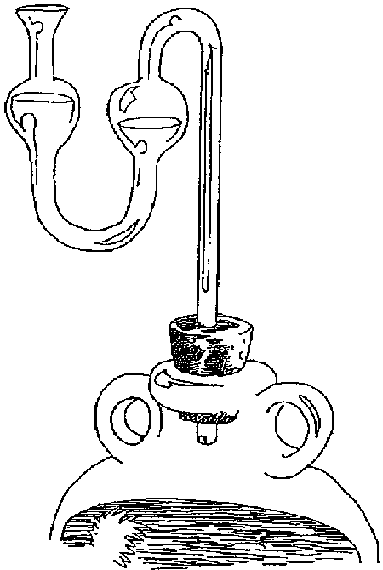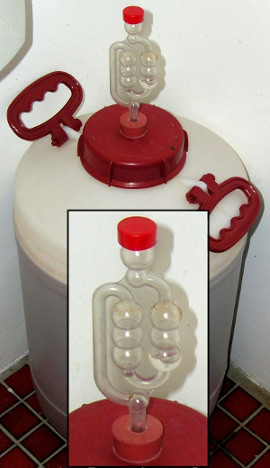Believe it or not: I even have something to say about something as simple as the airlock!
As beer or wine maker you cannot do without some kind of airlock. It has several functions:
- It keeps out air which can damage your wine or beer
- The CO2 developed during fermentation can go out of the demijohn via the airlock. The “empty” space of the fermenter or demijohn will be filled with CO2 because it is heavier than air. This layer of CO2 protects the wine or beer from oxygen in air.
- It keeps out bugs. Fruit flies love wine but can carry a bacteria which converts wine to vinegar.
- It keeps out wild yeasts or bacteria. Especially when you fill the airlock with a solution with sulphite and some citric acid or wodka.
The airlock is used often as indication that the fermentation has stopped or not. But beware! There are some traps!
- There could be a small leak. In this case you don’t see any movement in the air lock. Obviously this does not mean that fermentation has stopped! When the water in both sides of the airlock are at the same level you should be especially suspicious.
Since the airlock consists of 2 halves which are glued together the surface can be uneven at the seam. You can scrape off the uneven parts with a knife or scissors. - After some time you see the airlock bubbling again even though you are sure that fermentation has stopped. Possibly you have a spontaneous malolactic fermentation, but more likely it is caused by the weather; When the demijohn warms up the CO2 above the wine or beer will expand and push against the water in the air lock. Or there may be a low pressure front. This also causes the CO2 in the bottle to expand and cause a movement in the air lock. In the same way the airlock may work in the opposite direction, sucking in air from the outside world.
There are several types available. I tried 2 and ended up with the classic model. The downside of this air lock is that it is not easy to clean once it has gotten dirty inside. The other air lock I had consists of 2 parts making it much easier to clean. This air lock is also available in bigger sizes and can be used for bigger quantities.
However, I prefer the classic model. You can see the level of the water and the movement of the bubbles. It takes a very long time for water to evaporate. And, most important, it makes a very relaxing bubbling sound.
This is different for the other model that I used. It is not so easy to see whether there is still water in it. It has happened to me several times that the air lock was dry. Therefore I decided to stop using it.
If you are making bigger quantities and need a bigger air lock it is very easy to make one. I will post about this another time.
Hans



